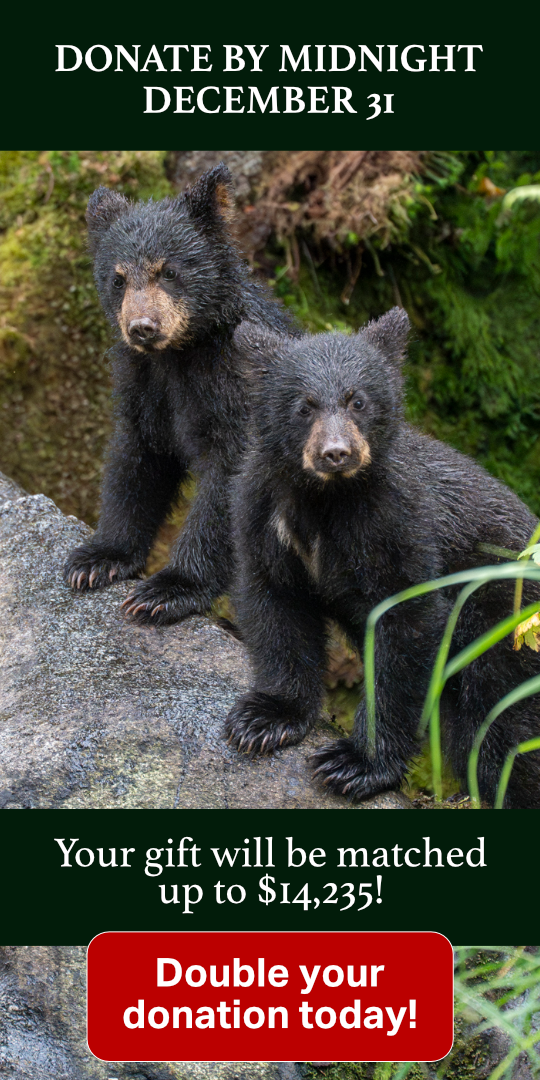One river
History
People power works!
Local conservation history
Informed and determined citizens have more power than corporations and governments want us to know. And when First Nations and environmentalists stand united, we can literally change the course of history.
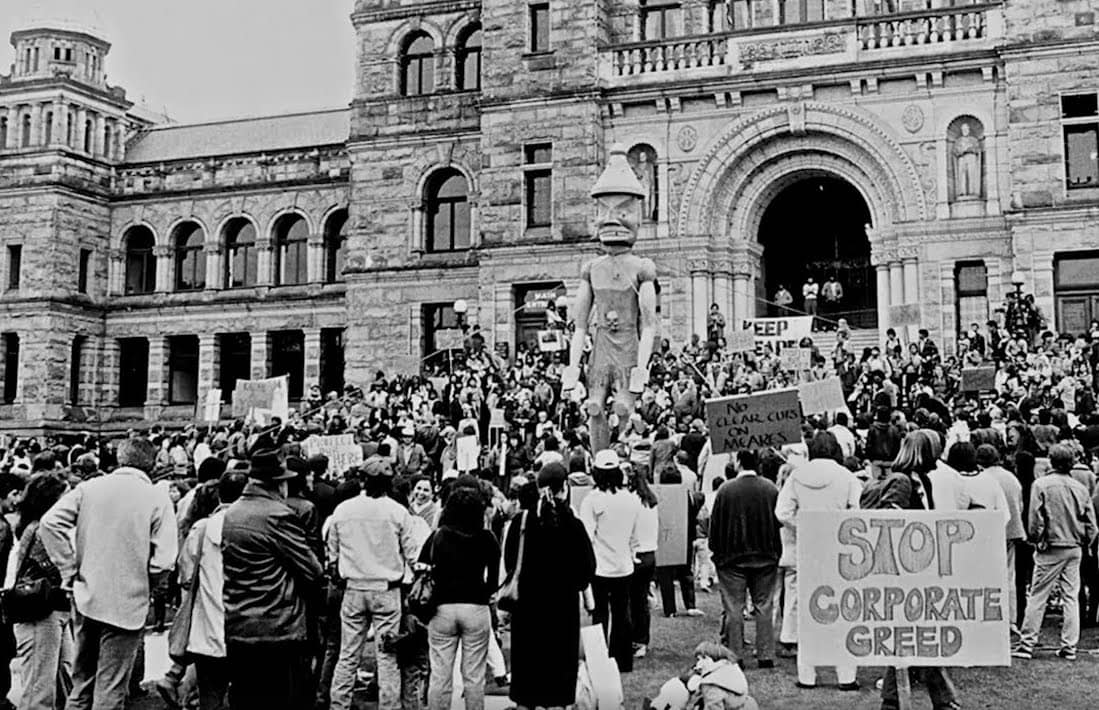
Early 1980s
Meares Island Protest
Tla-o-qui-aht and Ahousaht First Nations united back in the early 1980s to protect Meares Island from clearcut logging. They won an injunction which prevents any industrial development on Wah-Nah-Jus/Hilth-hoo-is until the Land Question is settled. Tla-o-qui-aht has since designated the island a Tribal Park.
Early 1980s

1988
Sulphur Passage
In 1988, locals noticed a road being punched through Sulphur Passage in Ahousaht First Nations territory, heading towards the vast swath of unlogged rainforest in northern Clayoquot Sound. This was a turning point, when people recognized that it wasn't just about protecting Meares Island—all of Clayoquot Sound is sacred ground. A summer of blockades ensued, with 37 people arrested—hanging in wicker chairs in the blasting zone, climbing on machines, and hanging from trees in hammocks.
1988

1990-1992
The War in the Woods
A series of blockades occurred at many of Vancouver Island’s remaining rainforest hotspots from 1990 to 1992. There were some pretty desperate moves made in attempts to stop logging in the last few stands remaining. It was at the Clayoquot Arm Bridge blockade in 1992 that a strategic decision was made to move to Gandhian-style protest in accessible locations, so you didn’t need to be a tree climbing eco-hero to be a conscientiousness objector.
1990-1992
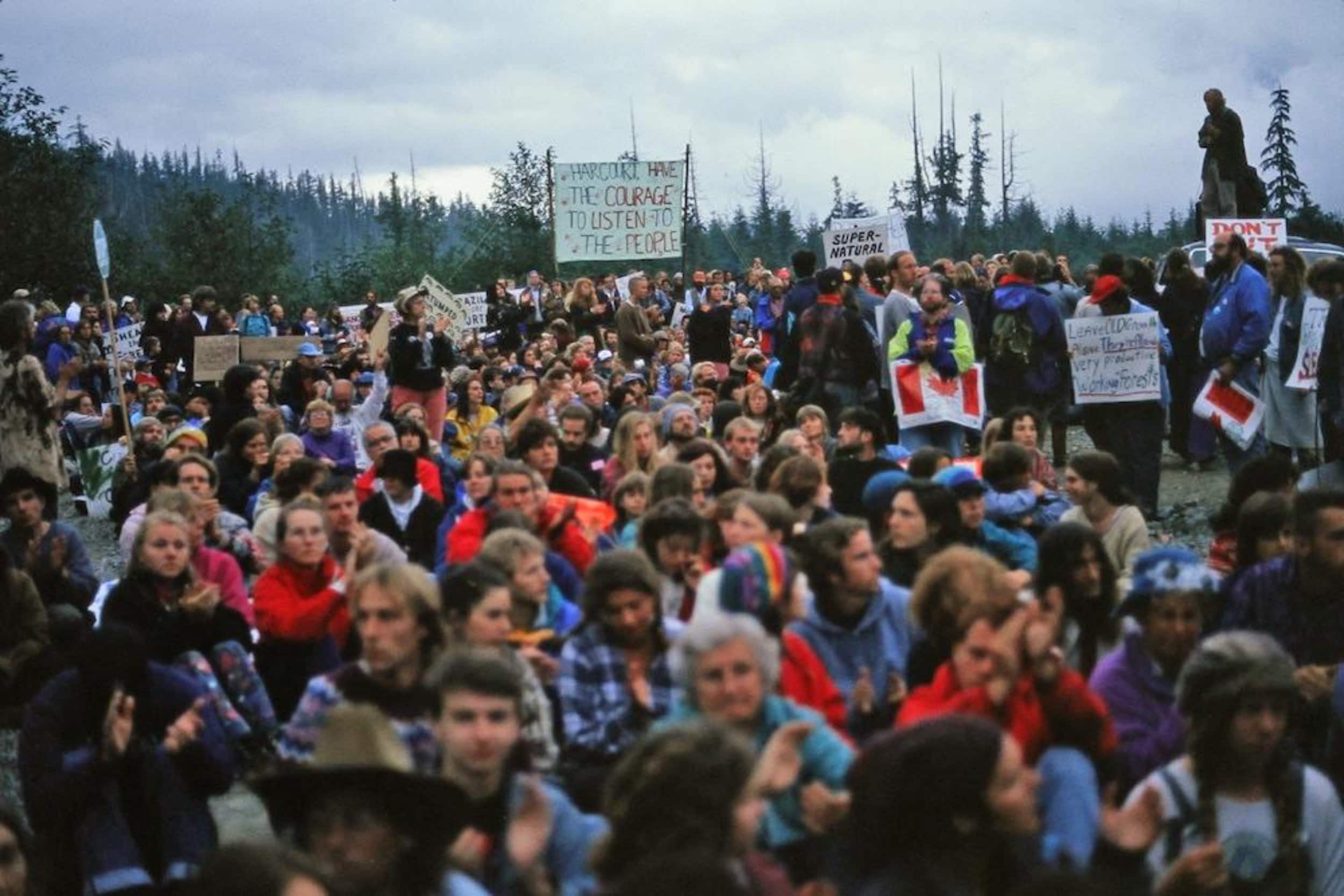
Summer 1993
Clayoquot Summer 1993
On April 13, 1993 the BC government announced they would only protect one third of Clayoquot Sound, leaving two-thirds open to clearcut logging. The Clayoquot Summer protests went viral in an age before the Internet—in part due to the images on the television news the summer before. Ten thousand people from all over the world showed up at the Peace Camp near Tofino, and nearly one thousand people were arrested—the largest act of civil disobedience in Canadian history.
Summer 1993
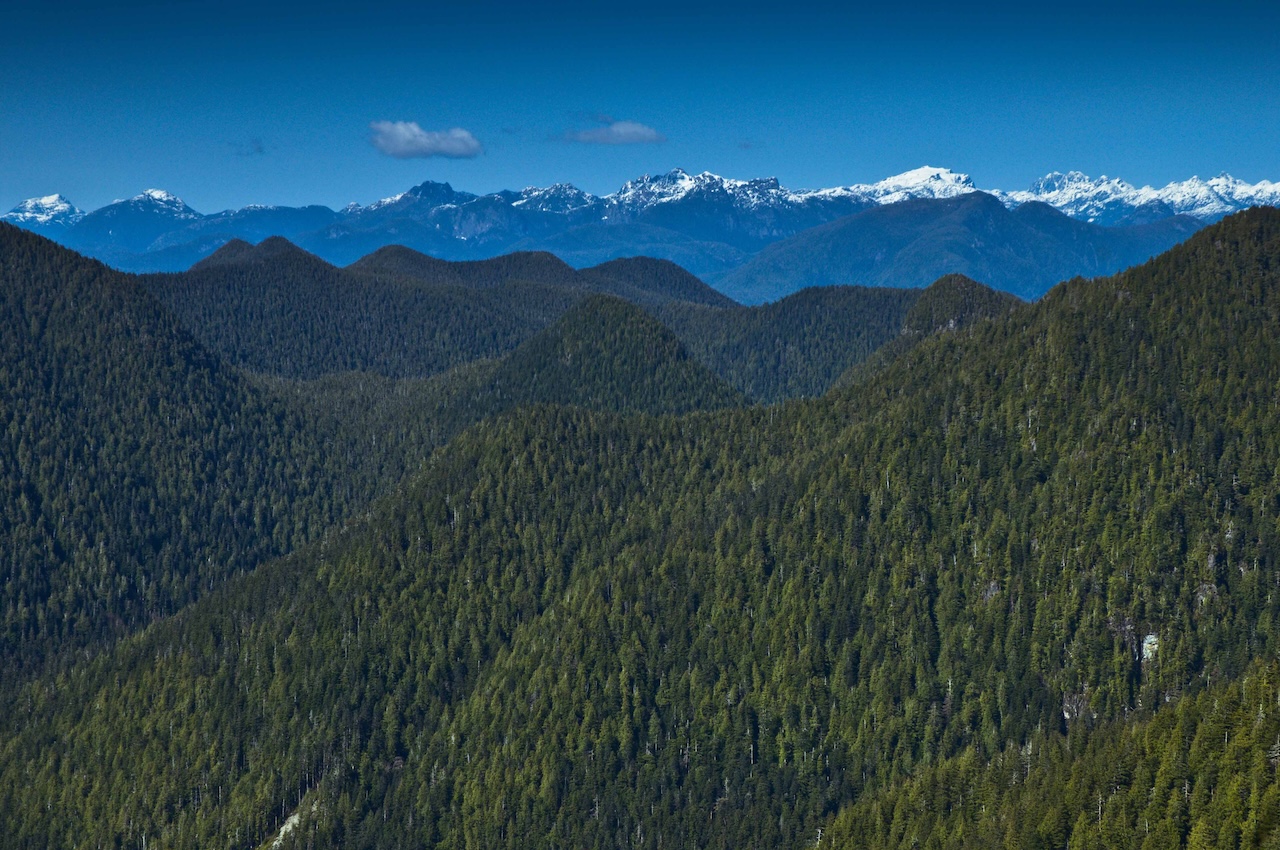
2024
10 New Conservancies
Something good and important happened last summer in the Clayoquot Sound UNESCO Biosphere Region. With little fanfare, Ahousaht and Tla-o-qu-aht First Nations announced the creation of 10 new conservancies, which will protect 76,000 hectares of key ancestral forests in their territories.
2024
Clayoquot Action History
Clayoquot Action was formed in 2013. Although the logging of ancient forests had largely been halted in Clayoquot Sound, our founders Bonny Glambeck and Dan Lewis knew that those forests would not survive without wild salmon. In the beginning they focussed on three major threats to wild salmon: mining, salmon farming, and the risk of increased tanker traffic causing a major oil spill in Clayoquot Sound.
Fish Farms Out
Mining Ban
No Tankers
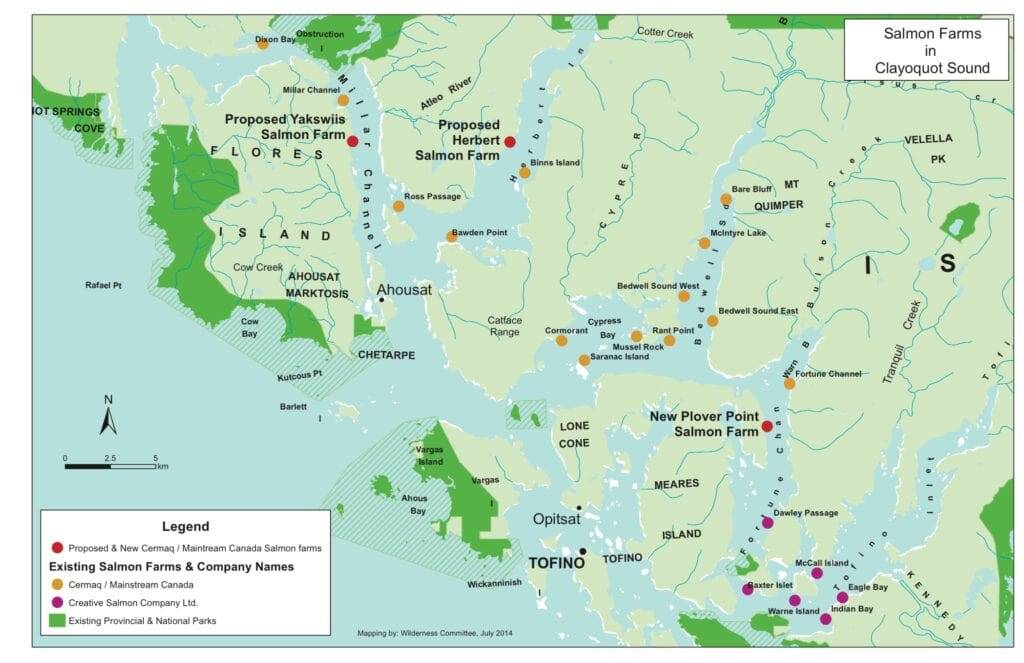
2014
Two new fish farms?
Back in 2014 Cermaq applied for two new salmon farm licenses for the Clayoquot Sound UNESCO Biosphere Region. They may not have realized they were poking a hornet's nest—only one would end up being approved, and that one was occupied by members of Ahousaht First Nations, and evicted by their Chiefs.
2014

2015
fish farm win!
Cermaq was granted permits in 2015 to install a new salmon farm on the eastern shore of Flores Island. They were not expecting members of Ahousaht First Nations to intervene… After a peaceful occupation by the Yaakswiis Warriors, the Ahousaht leadership asked Cermaq to tow their farm away.
2015

2015
15 sea lions massacred
Cermaq Canada conducted a marine mammal massacre at a Clayoquot Sound salmon farm. On two days in December 2015, fifteen California Sea Lions were shot at their Binns Island salmon farm.
2015

2016
ON TO NORWAY
Clayoquot Action sent a Wild Salmon Delegation to Norway to meet with the Norwegian government and industry, and Indigenous and environmental allies. We returned better informed about the state of crisis of the Norwegian industry, and connected to Sami allies and the wild salmon movement in Norway.
2016
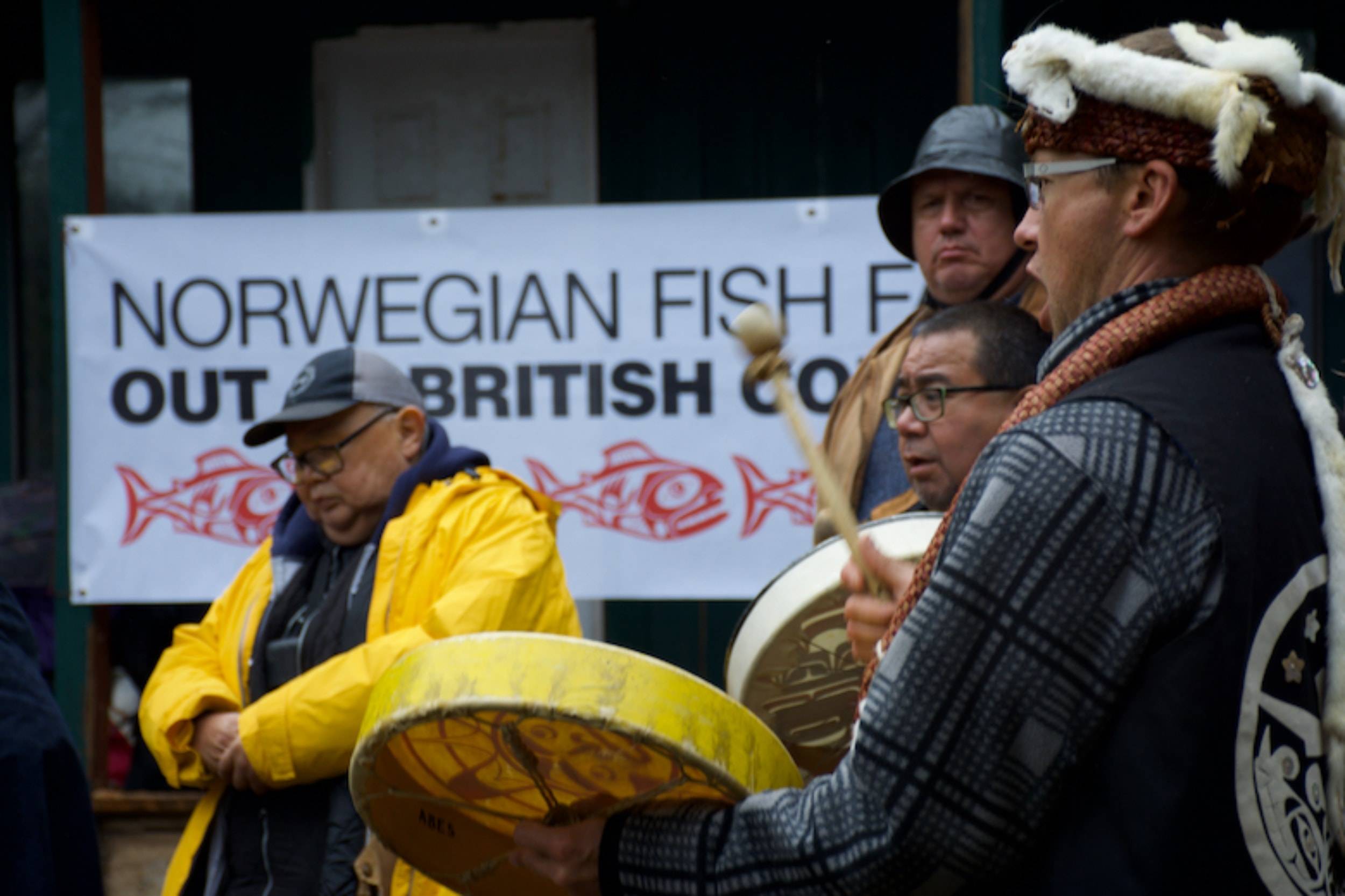
2017
Fish farms occupied!
In 2017 Chief Ernest Alfred occupied the Swanson Island fish farm in 'Namgis First Nation territories in the Broughton Archipelago. Within a year, the BC government had reached a historic agreeement to see an orderly removal of 17 fish-farm sites between 2019 and 2023.
2017

2017
Tainted bloodwater
It’s hard to gasp underwater. But that’s what photographer Tavish Campbell did when when he first saw the bright red blood water gushing out of Creative Salmon’s fish processing plant, into Tofino Harbour. It was Autumn 2017. Clayoquot Action sent tissue samples from the blood water to the lab for testing—they found piscine orthoreovirus (PRV).
2017

2017
pesticide permit
A small ad appeared in Tofino’s newspaper. It stated that Norwegian-based salmon farming giant Cermaq was applying to the BC Ministry of Environment for a permit to use Interox® Paramove® 50 to combat sea lice. A bit of searching on Cermaq’s website revealed their application is to deposit 2.3 million litres of pesticide—enough to fill an Olympic-sized swimming pool—into the pristine waters of the Clayoquot Sound UNESCO Biosphere Reserve over a three-year period.
2017
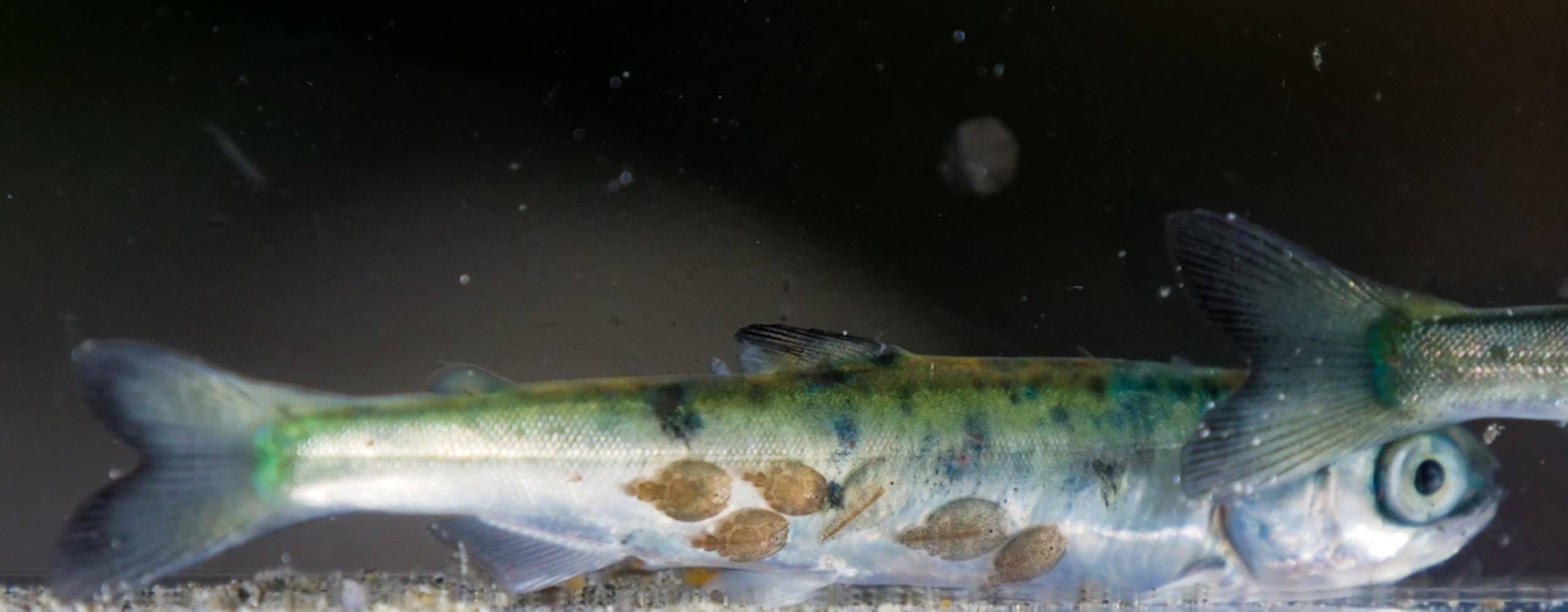
2018
Salmon lice outbreak
In 2018 Cermaq had an unprecedented outbreak of lice in their Clayoquot Sound operations. Open net-pens are crowded with up to half a million salmon—ideal breeding grounds for parasites. This drastically increases the number of lice in surrounding waters. One to three lice is a lethal load for juvenile wild salmon.
2018
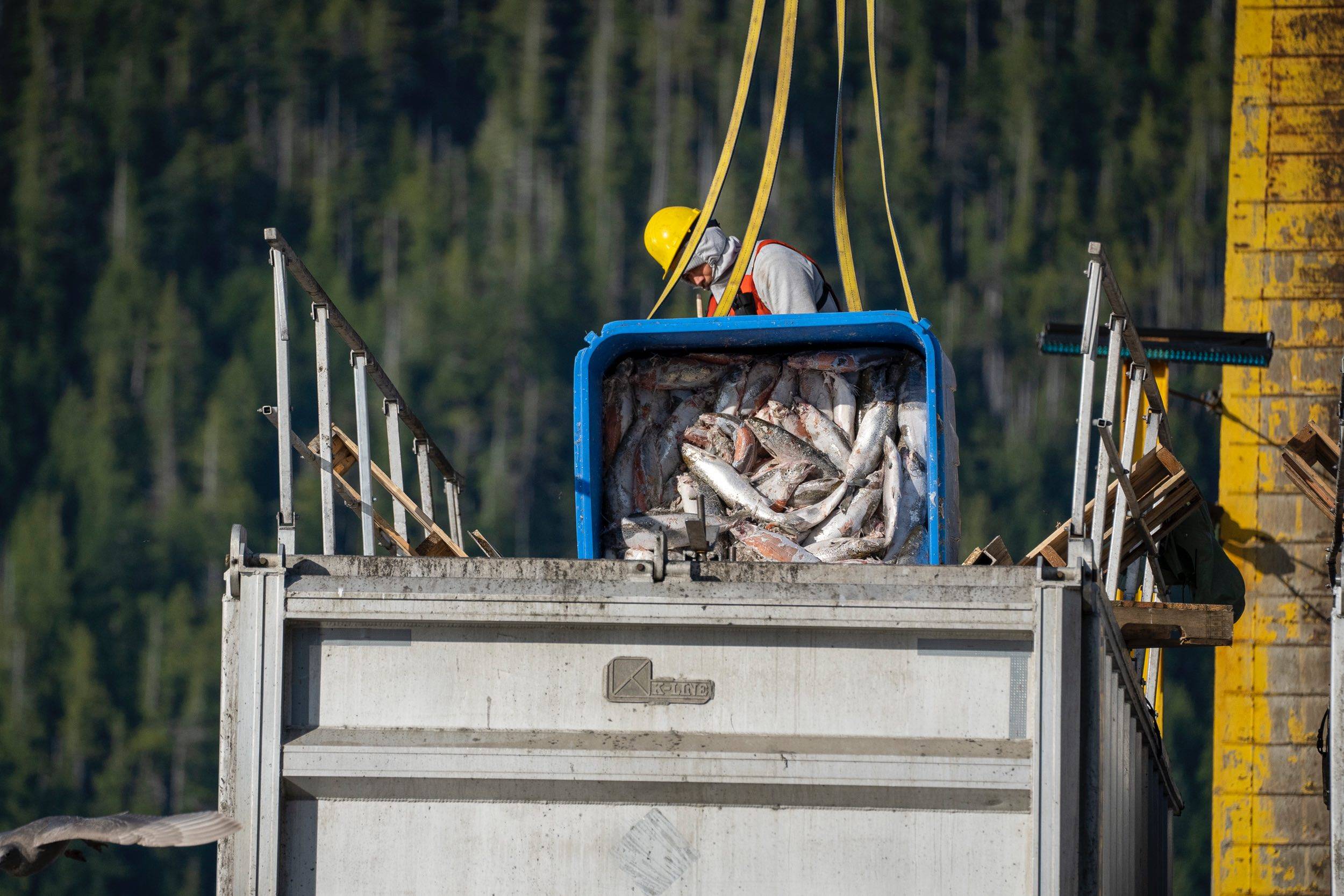
2019
mass die-off
Late at night in November, Cermaq was observed loading three empty bio-waste trailers onto a barge and heading off into the stormy night. At the same time, three fully loaded bio-waste trailers left Tofino. The next morning a Clayoquot Action team on found dive crews at work, and bio-waste trailers being loaded with dead fish, at three of Cermaq’s Clayoquot operations.
2019
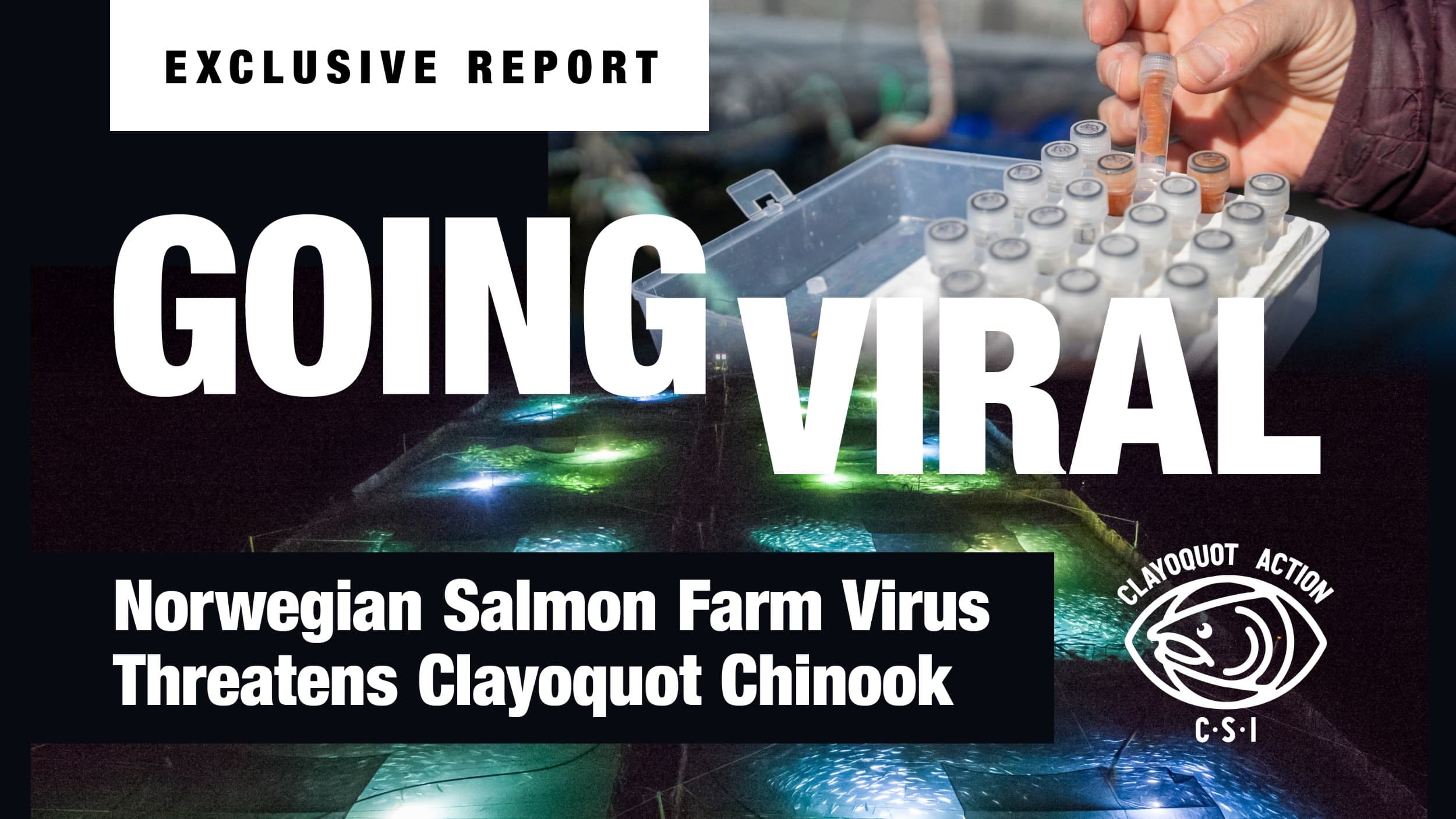
2020
going viral report
The goal of our ‘Going Viral’ Report was to establish the presence or absence of piscine orthoreovirus (PRV) on salmon farms in Clayoquot Sound. Samples were collected adjacent to stocked fish farms and sent for testing by Dr. Fred Kibenge, one of the world’s leading salmon virologists. The results: we found 90% of Cermaq’s active farms were PRV-infected; 100% of Creative Salmon’s farms were infected as well.
2020
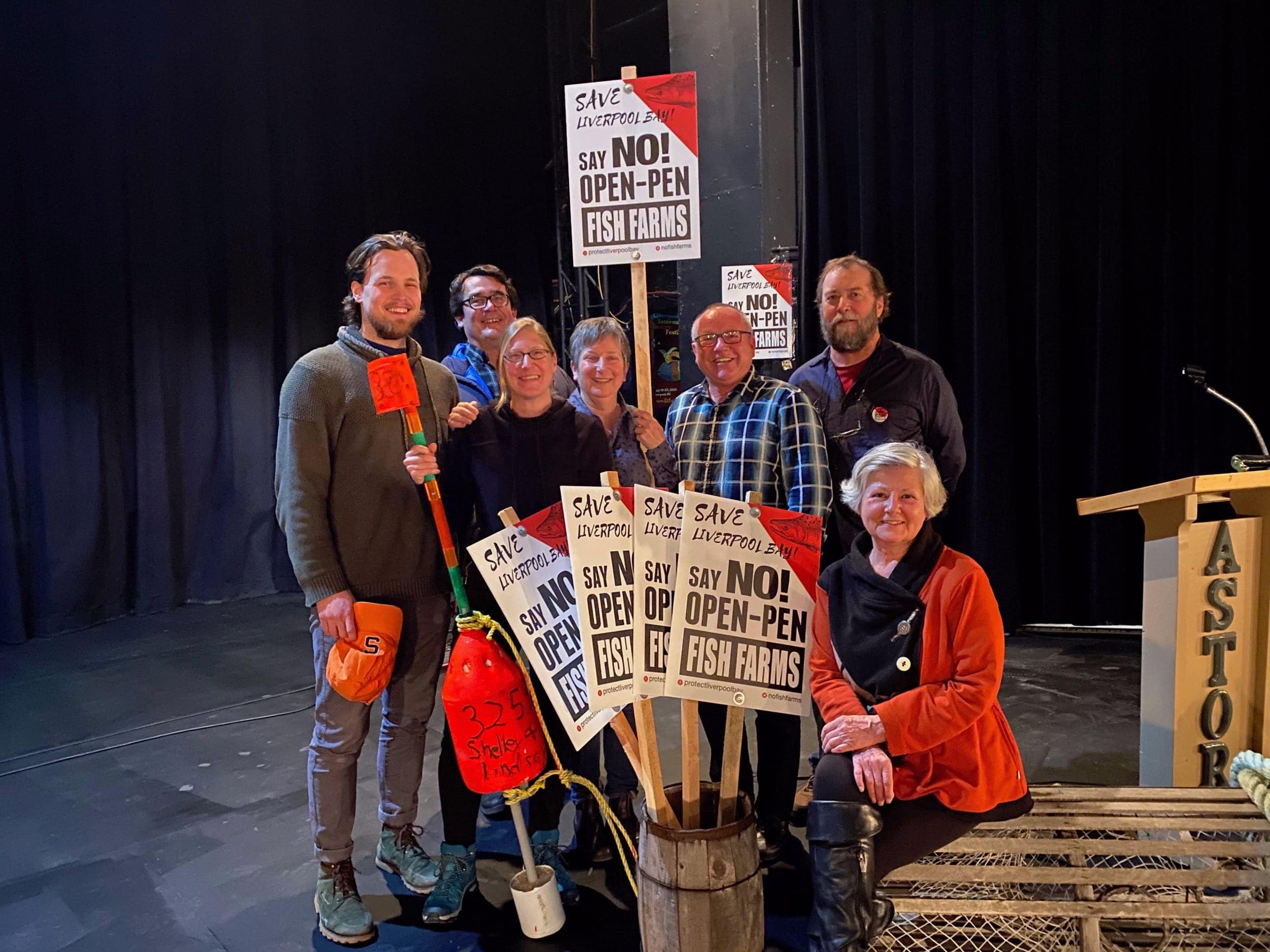
2020
#Goodbye Cermaq!
Cermaq was planning to build 20 new fish farms in Nova Scotia this year. Community concern was mounting as grassroots groups got organized ahead of Cermaq’s “Hello Nova Scotia” public open houses. Ecology Action Centre had invited Karen Wristen (Living Oceans Society), Bob Chamberlin (First Nations Wild Salmon Alliance) and Clayoquot Action's own Bonny Glambeck on a speaking tour of Nova Scotia communities. We planned to bring lessons learned from the BC salmon farm fight.
2020
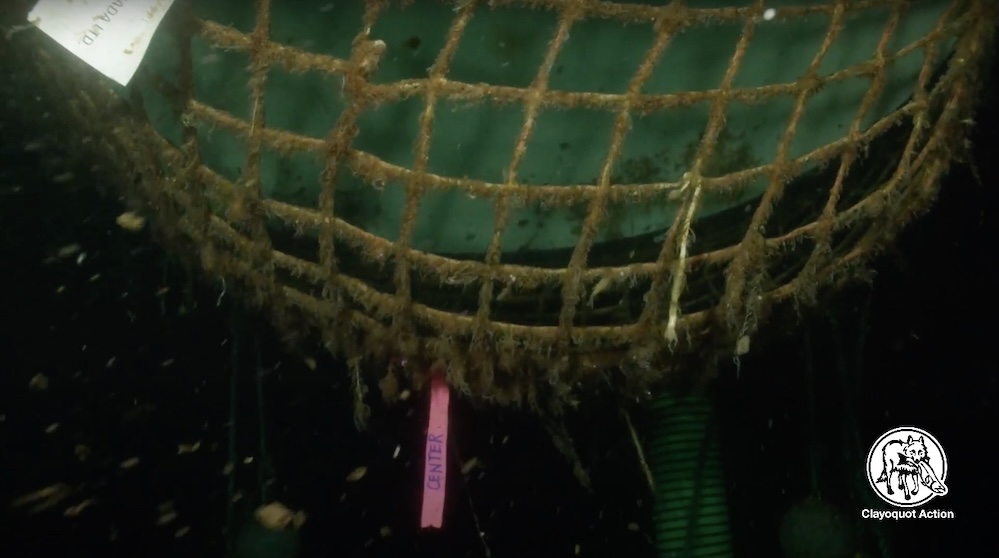
2021
Cermaq halts SCCS trial
Cermaq halted sea trials on their experimental Semi-Closed Containment system (SCCS) this fall. After operating the facility in Ahousaht Territory near Tofino for less than a year, Cermaq threw in the towel, citing “a technical fault and related fish welfare”. Cermaq states on their website: “SCCS is immature technology under development, therefore it is not surprising when you are trialing new technology you will run into challenges”.
2021

2022
Wild salmon flotilla
Sometimes in politics you have to demonstrate your people power, to show the government that there is public support to take action. Check out our "Do not renew in ’22!" flotilla.
2022
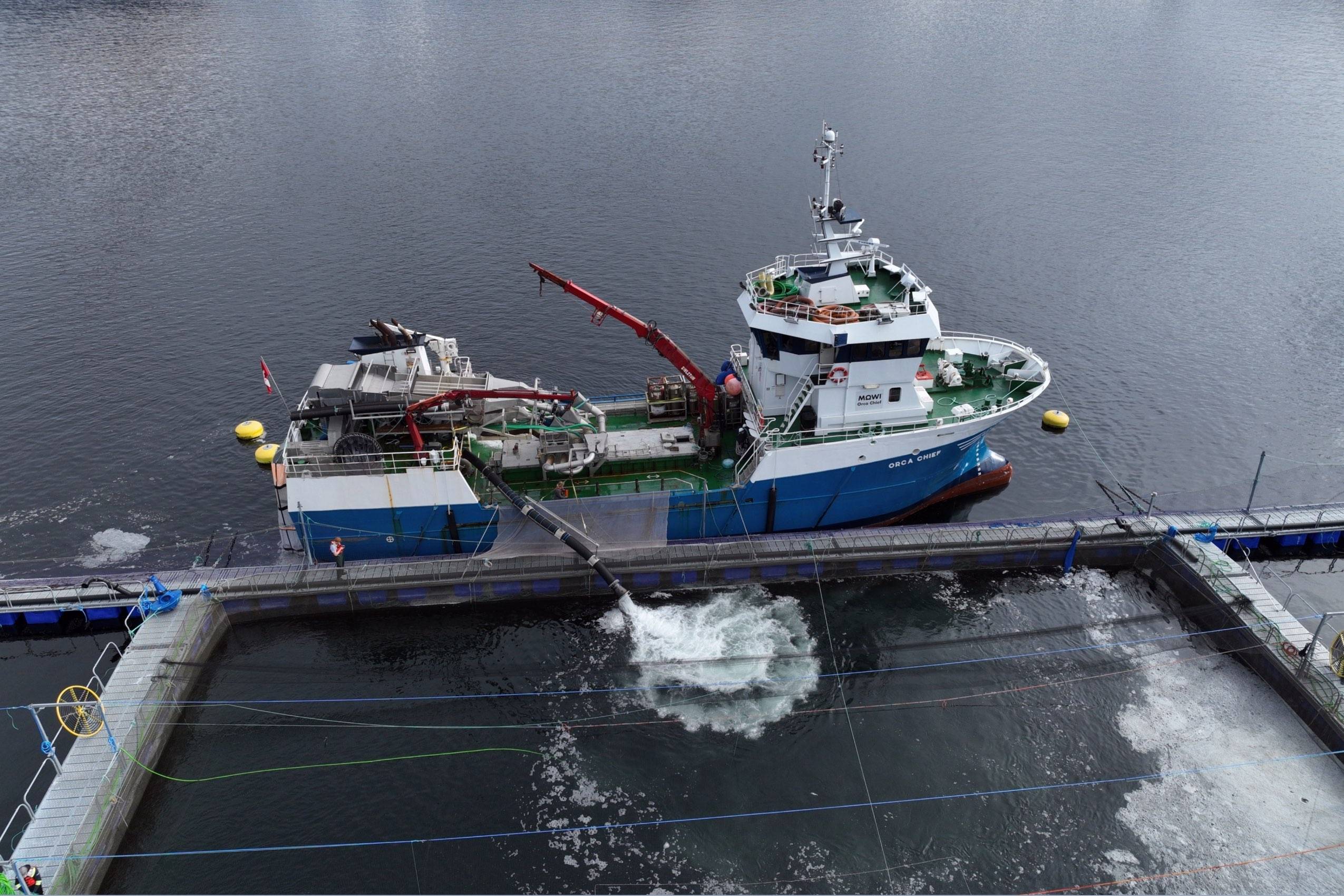
2023
Fish farm crime and… reward?
Sea lice from salmon farms are a major threat to wild salmon. No company has ever figured out how to keep them under control anywhere in the world. Cermaq breached regulations in '22 and '23, but was never charged and then received a large expansion permit. What?!
2023
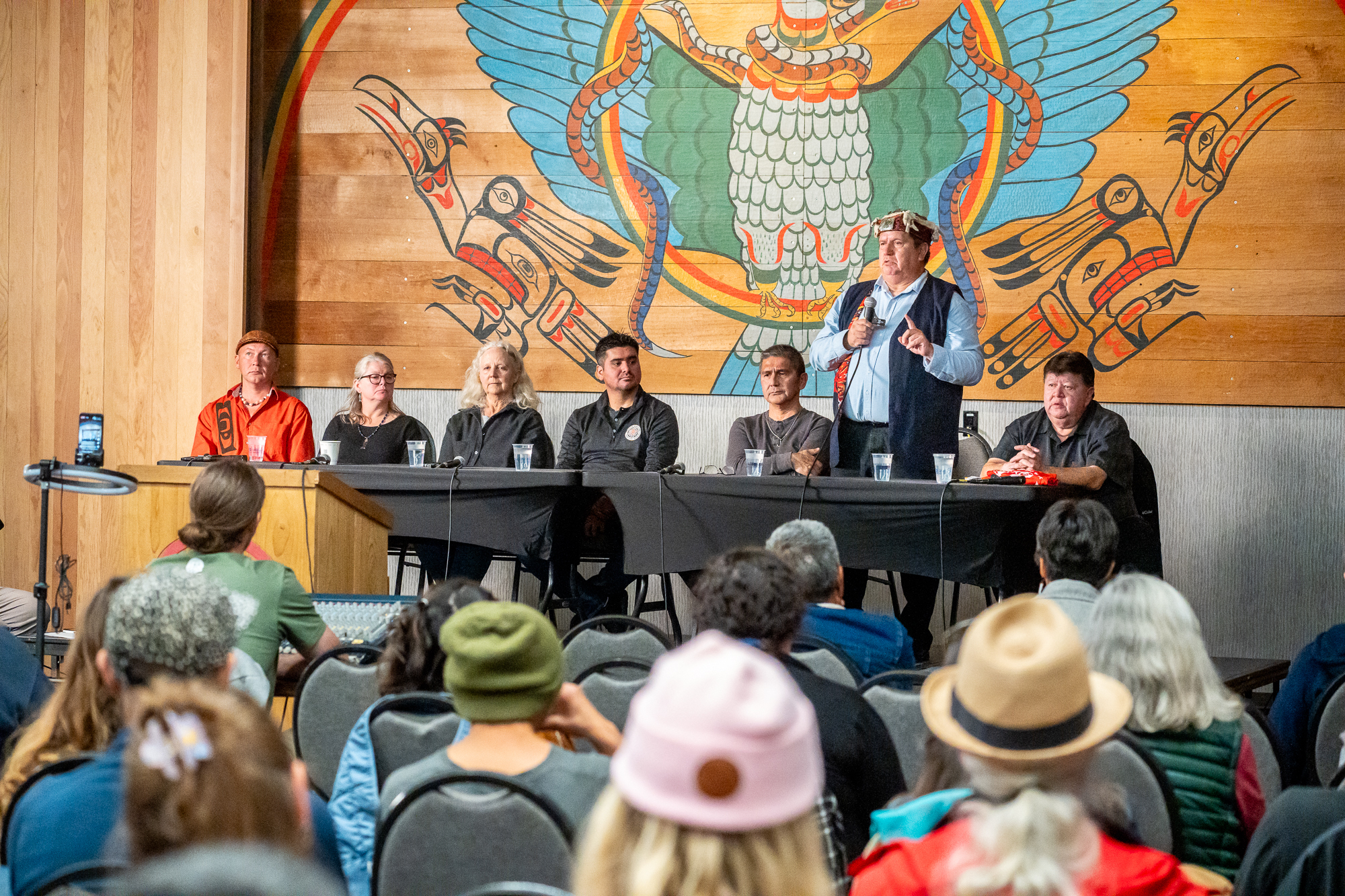
2023
People of the salmon
The First Nations of the Broughton Area have removed all 17 fish farms from their territories! Members of Tla-o-qui-aht First Nations here in Clayoquot Sound were curious to know how it was done. So we teamed up to co-host an event with Tyee Chief Hiyoueah. Leadership from ‘Namgis, Kwikwasut’inuxw Haxwa’mis, and Mamalilikulla First Nations travelled down from Alert Bay.
2023

2024
Paddle Out for Wild Salmon
For BC Wild Salmon Day on June 1st, Salmon People in Tofino gathered to paddle out and call on the government to keep the promise to remove fish farms from the ocean.
2024

2024
Fish Farm Medicine Revival Roadshow
Together with musician Luke Wallace and Indigenous speakers from the front lines of fish farm resistance: Gisele Martin, Skookum John and Ernest Alfred, we toured our documentary SALMON SECRETS around Vancouver Island.
2024

a tale of two mines
An open-pit copper mine in the heart of Clayoquot Sound? A historic gold mine re-opened using modern technology to scour out minerals the old-timers couldn’t get at? Is this the best we can hope for, almost 30 years after the Clayoquot Summer peaceful protests put the region on the map of global ecological hotspots?
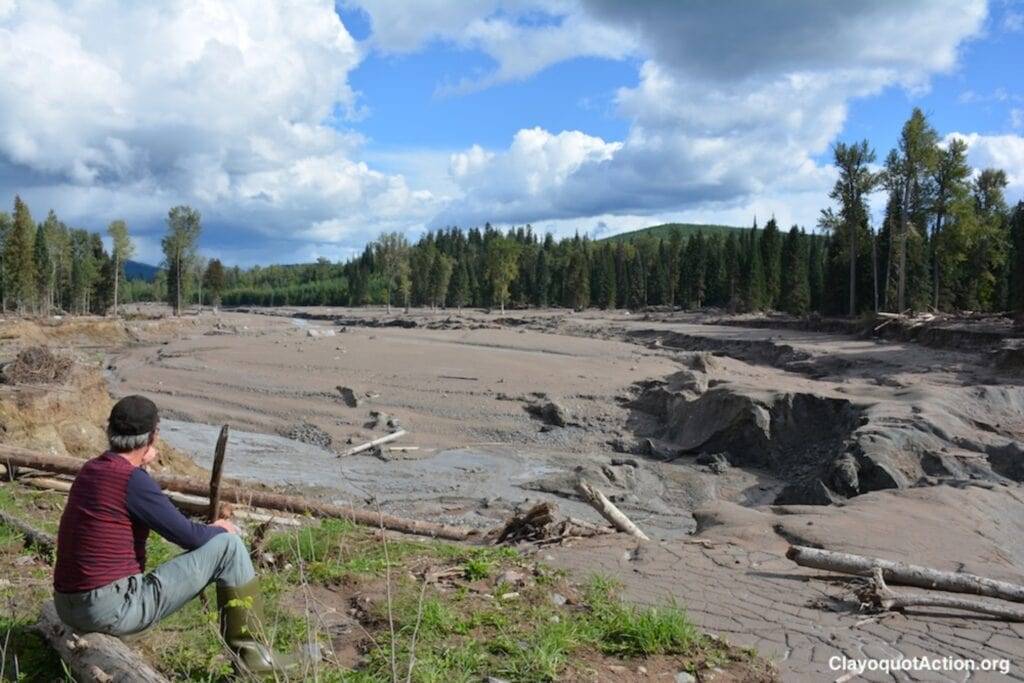
2014
Mt Polley eyewitness
We didn’t really want to visit the Mount Polley Mine disaster site near Williams Lake. But felt we had to go—to see for ourselves how bad things could get if Imperial Metals ever succeeded in opening a similar mine on Catface Mountain in Clayoquot Sound. What we saw broke our hearts.
2014

2015
mt polley report
In 2015 the BC government released the report of an independent panel appointed to determine the cause of the dam failure at Imperial Metals’ Mount Polley mine. When that dam failed, 25 million cubic metres of toxic slurry flowed into the pristine waters of Quesnel Lake—home to one quarter of the Fraser River's sockeye salmon. The Panel concluded that the dominant contribution to the failure resided in the design, and firmly rejected “any notion that business as usual can continue.”
2015

2015
who's knocking?
Before the dust had even settled on their Mount Polley Mine disaster, Imperial Metals was active again in Clayoquot Sound. This finding was published in Who’s Knocking?, our report on mineral tenures in Clayoquot Sound. The report, done in partnership with the Fair Mining Collaborative, details who is looking for minerals in Clayoquot Sound, and what types of minerals they are looking for.
2015
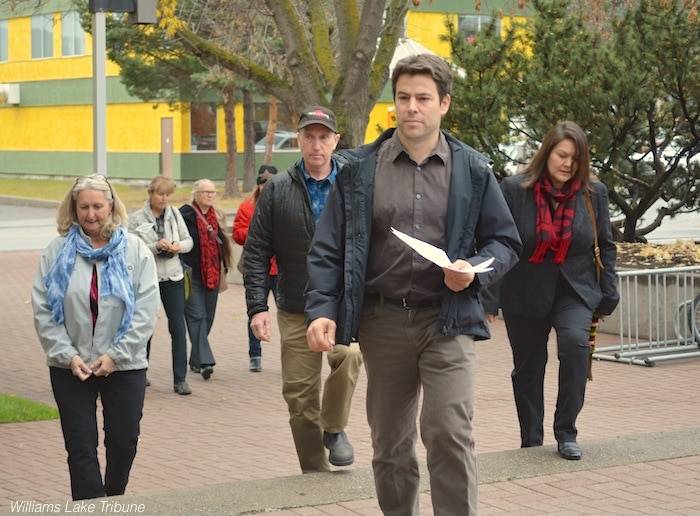
2016
mt polley lawsuit
In October, Clayoquot Action joined MiningWatch Canada in Williams Lake to support their launch of private prosecution against Imperial Metals and the BC government for the 2014 Mount Polley Mine disaster.
2016

2017
mt polley: no penalties!
As we gathered in Tofino on the third anniversary of the Mount Polley mining disaster, it was easy to feel connected with the First Nations in whose territories Mount Polley lies. The air was hazy with smoke from the wildfires which had forced them to evacuate from their homes. The haze obscured the view of Catface Mountain, where Imperial Metals is currently pursuing plans to build an open-pit copper mine.
2017
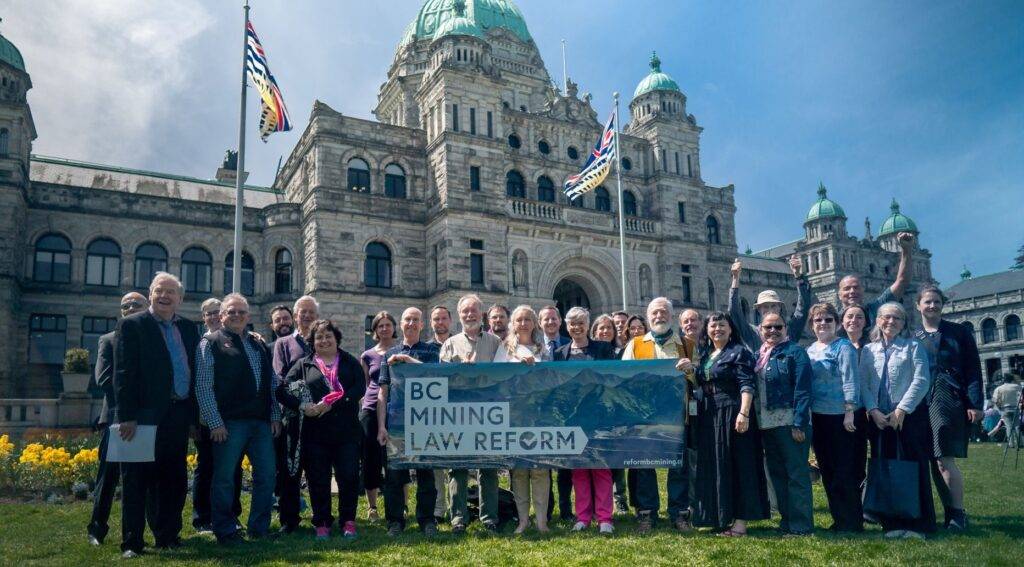
2019
BCmlr Network launch
In May, Clayoquot Action helped launch the BC Mining Law Reform Network. The network today includes nearly 30 local, provincial and national organizations from a wide range of sectors, including citizen and community groups, First Nations, experts, academics, and social justice and environmental organizations.
2019
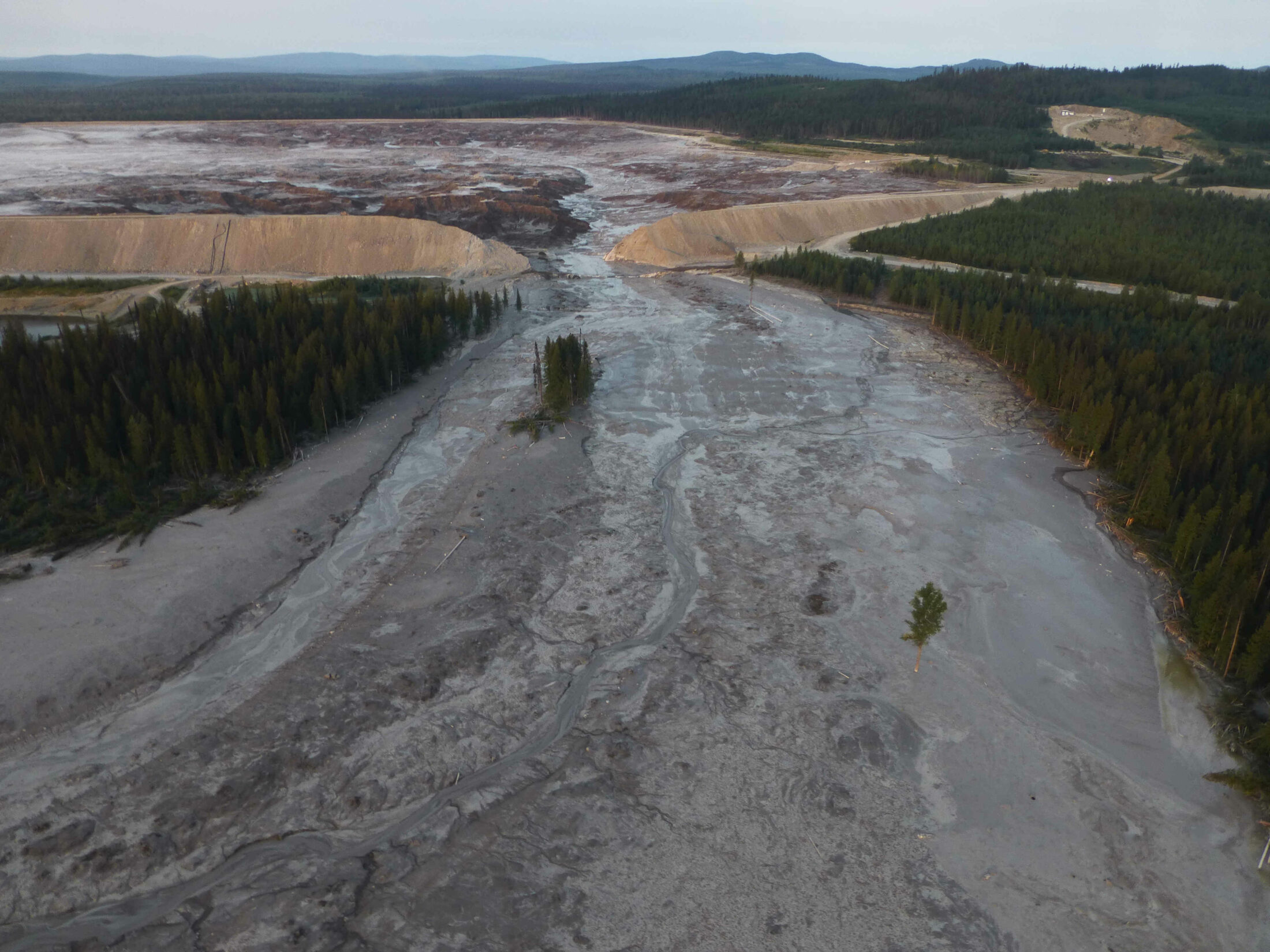
2024
Mt Polley 10 years anniversary
A decade after disastrous breach, Mount Polley mine tailings dam could get even bigger. A faulty tailings dam at the B.C. mine dumped billions of litres of waste into the environment — and Quesnel Lake is still contaminated. Now Imperial Metals wants to expand the same dam.
2024
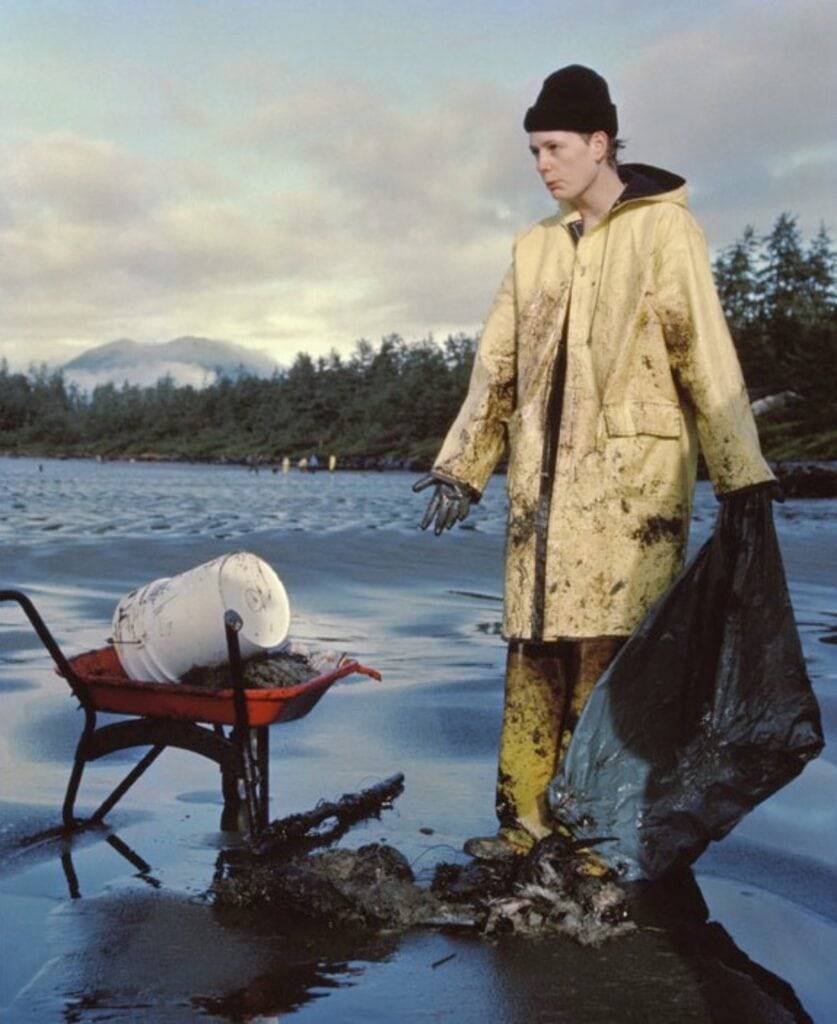
2014
Oil-free Clayoquot!
In late December 1988, the Nestucca oil barge rammed its own tugboat in Washington state after a cable snapped. The US Coast Guard ordered the leaking barge be towed out to sea. 5,500 barrels of oil were spilled. The spill could not be contained or tracked because the oil floated just below the surface. In the early days of January, to everyone's surprise and horror, the spill began to wash ashore near Tofino.
2014
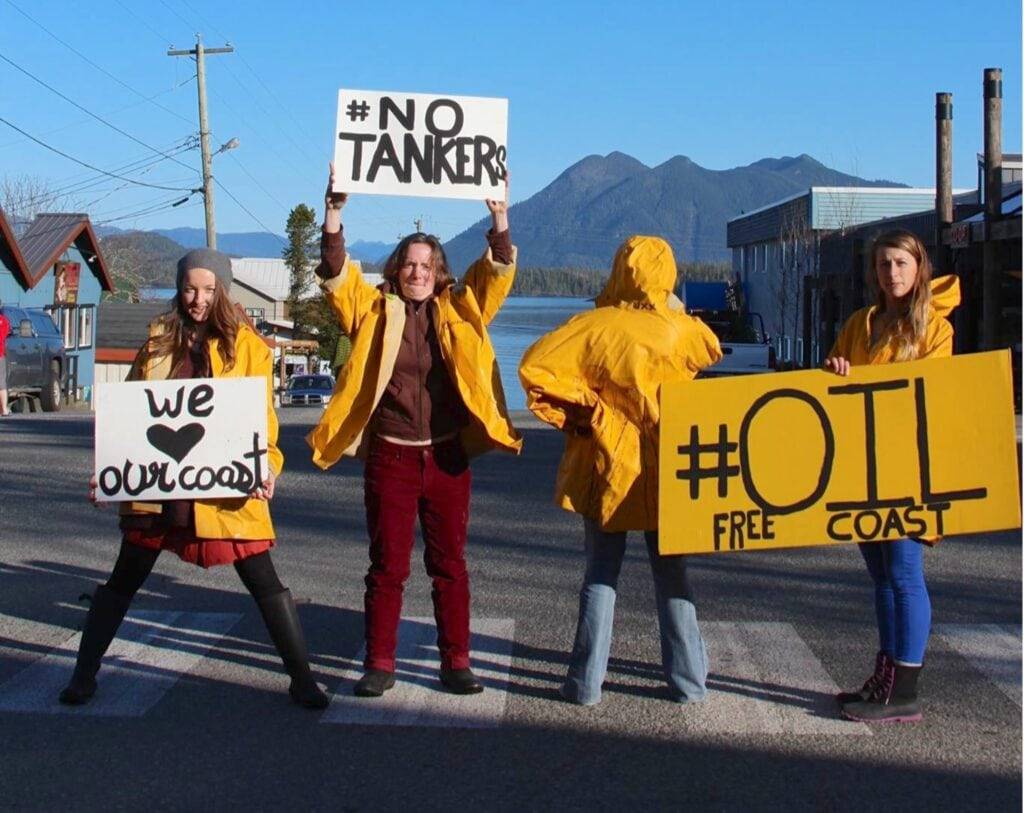
2014
Fossil Fools Day
On April 1st, Clayoquot Action staged a mock oil spill in Tofino. Social media users were shocked by an image of an oil tanker spewing oil onto Chesterman's Beach, and staged videos of surfers and paddlers who had 'witnessed' the spill—while a crew of volunteers leafletted drivers in downtown Tofino to alert them there had been a mock oil spill.
2014
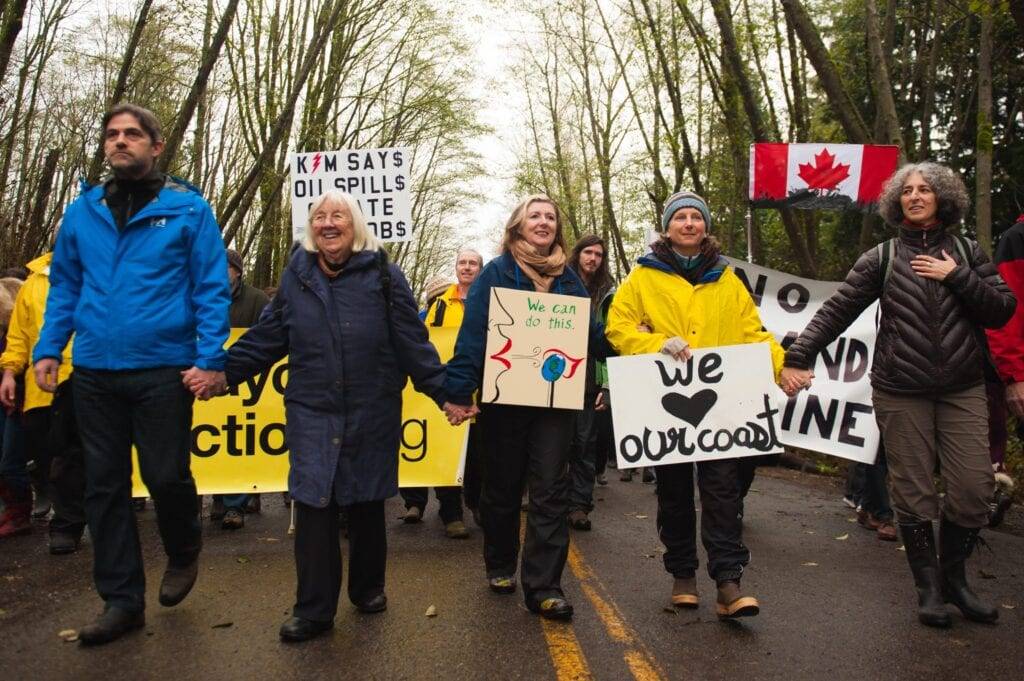
2014
Busted in Burnaby…
My heart was pounding as I took the microphone to speak to the crowd of two hundred rallied at the foot of Burnaby Mountain. Not because I was nervous about speaking, but because of the great emotion welling up inside of me—I was about to be arrested. Arrested for something that has weighed heavily on my heart and mind for decades—the climate crisis.
2014
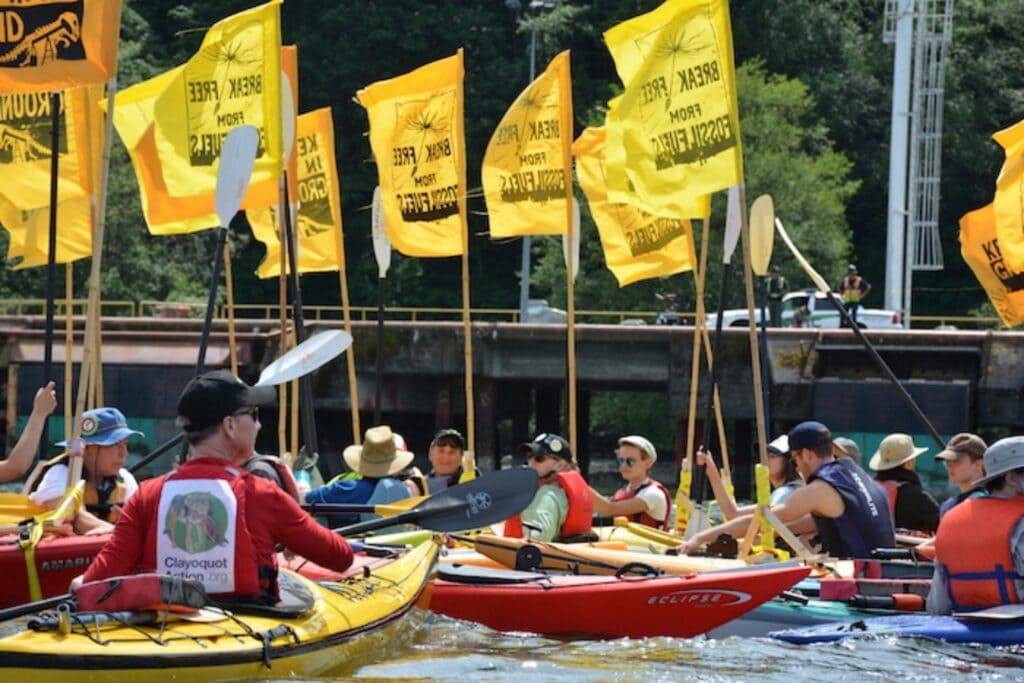
2016
break free!
When I heard the call-out for Break Free 2016!—a global day of action against fossil fuels—I knew we had to go. The plan was to surround Kinder Morgan’s Westridge Marine Terminal in Burnaby, with marchers on land and ‘kayaktivists’ on the water. Kayaking is the whole reason I am an activist—it was a 1990 circumnavigation of Vancouver Island that led me to dedicate my life to conservation.
2016

2017
Water is life
A team of Clayoquot Action volunteers gathered to plan an event for the April 29 National Day of Action. Nobody had an appetite for marching down Tofino’s 3-block main drag chanting "Hey hey, ho ho, Kinder Morgan’s got to go". It’s different in a small town—we needed something fun and inclusive! We began by looking at the Beautiful Trouble website, and the team quickly settled on the tactic of a human banner.
2017
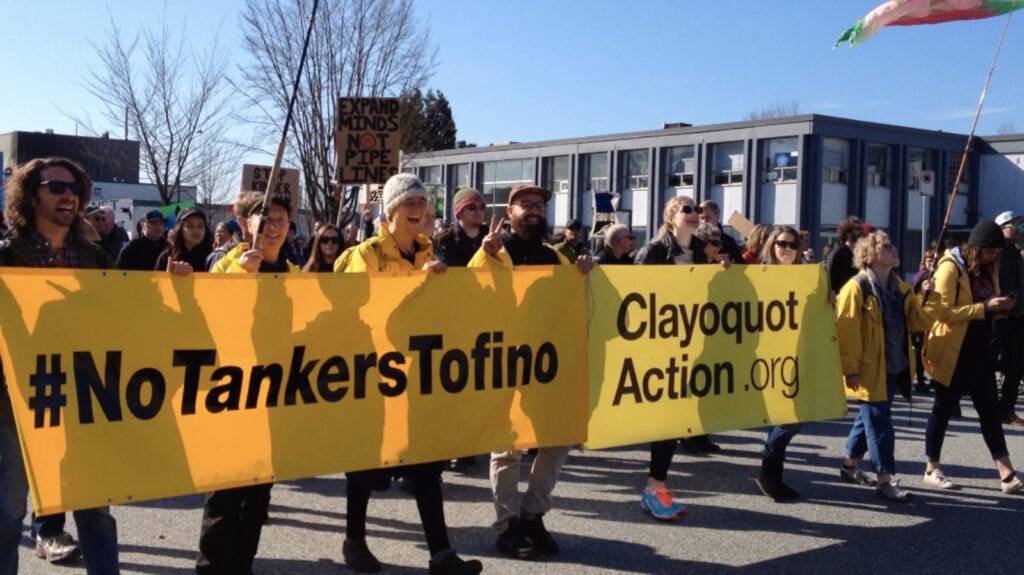
2018
protect the inlet
Early March saw the launch of Kwekwecnewtxw (pronounced Kwu-kwe-ow-tukh), led by the elders and spiritual leaders from the Tsleil-Waututh First Nation. They called on as many people as possible to join in a historic launch to Protect the Inlet. A crew from Clayoquot Action was there.
2018
